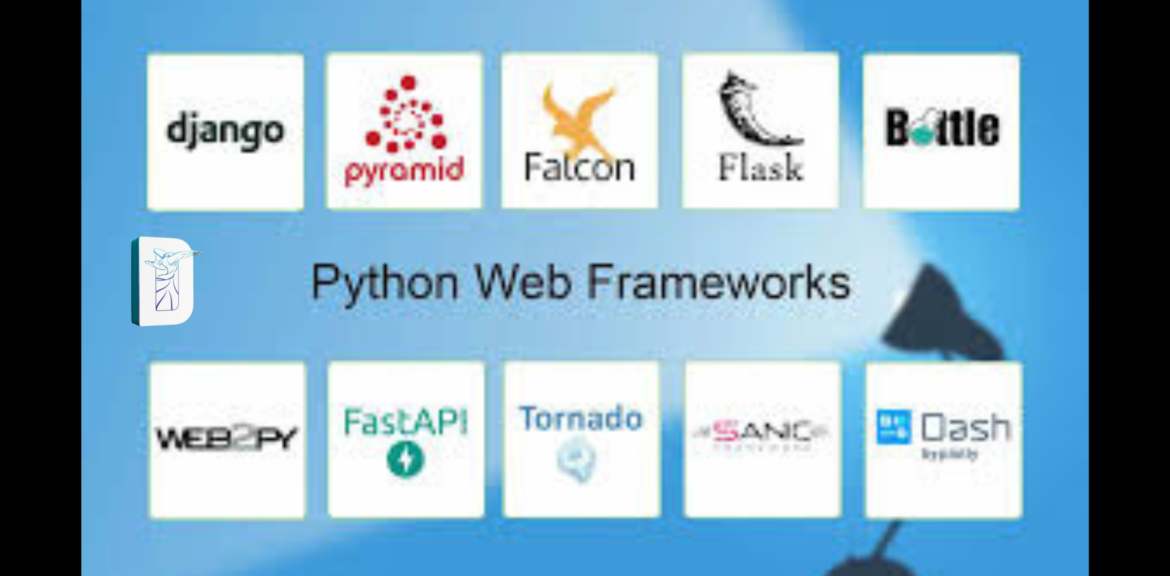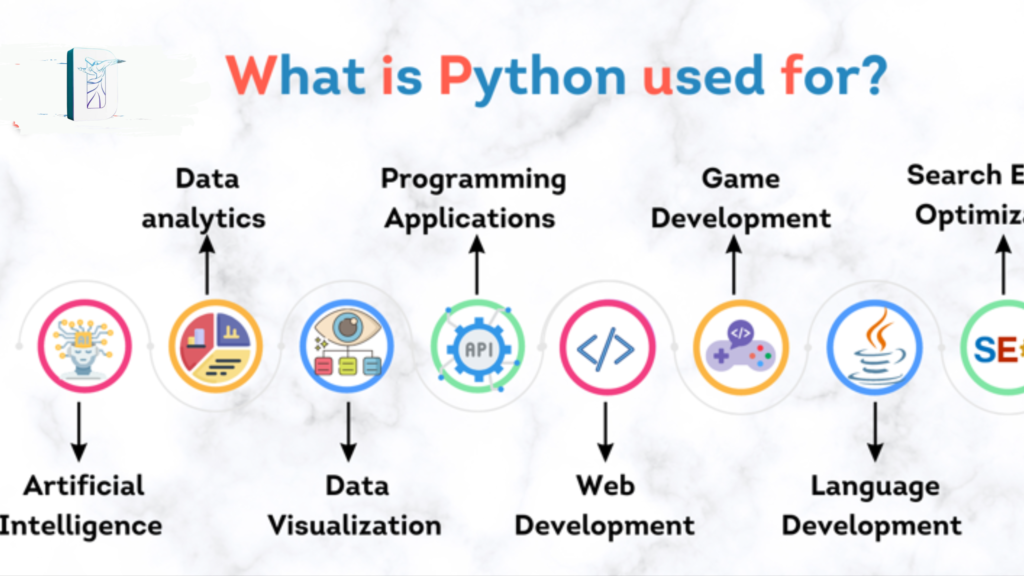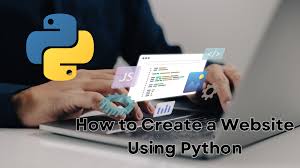
Python has emerged as one of the most popular programming languages in the world, thanks to its versatility, simplicity, and robust ecosystem. From data science to artificial intelligence and web development, Python plays a crucial role in powering modern applications. In this blog, we will delve into the world of Python web development frameworks, explore their benefits, and help you choose the right framework for your next project. Additionally, we will touch on concepts like “what is Python,” “programming,” and the relevance of “Python code” in web development.
What is Python?
Python is a high-level, interpreted programming language designed for simplicity and readability. Created by Guido van Rossum in 1991, Python emphasizes code readability and enables developers to write clear, logical code for small and large-scale projects alike. Its vast standard library and active community make Python a go-to language for developers worldwide.
Why Python for Web Development?
Python has become one of the most popular programming languages, and its application in web development is a key reason for its widespread use. Below, we explore why Python is an excellent choice for web development, touching on its simplicity, robust frameworks, scalability, and thriving community.

1. Simplicity and Readability
One of the standout features of Python is its simple, easy-to-read syntax. This makes it an ideal language for both beginners and experienced developers. Python’s clear and concise code structure allows developers to focus on building functionality rather than dealing with complex syntax or ambiguous code. This results in faster development cycles and easier maintenance.
2. Powerful Frameworks for Web Development
Python offers several powerful and well-established frameworks that speed up web development. Frameworks like Django and Flask provide robust tools for building secure, scalable, and efficient web applications.
- Django: A high-level framework that encourages rapid development and clean, pragmatic design. It includes many built-in features like authentication, routing, and database management, making it ideal for complex, database-driven sites.
- Flask: A lightweight and flexible framework, perfect for developers who prefer more control over their application and want to build smaller applications or APIs.
Both frameworks provide great libraries and tools, making it easier to implement web functionalities like user authentication, database connections, and routing.
3. Versatility and Scalability
Python is versatile enough to be used for small projects as well as large, enterprise-level applications. Whether you’re building a simple blog or a highly scalable e-commerce platform, Python’s frameworks provide the tools needed to scale applications effectively. The language’s scalability is evident in the success of major tech giants like Instagram and Pinterest, which use Python for their backend systems.
4. Strong Support for Integration
Python is excellent at integrating with other languages and technologies, making it ideal for web development projects that need to interface with multiple systems. Python has built-in libraries for working with databases, APIs, and other technologies. Additionally, it supports integration with front-end frameworks like React and Angular through various libraries and APIs.
5. Large Community and Rich Libraries
Python has one of the largest and most active programming communities. This ensures extensive resources, tutorials, and open-source libraries to aid in development. The Python Package Index (PyPI) has thousands of libraries, enabling developers to easily find packages for tasks ranging from data processing to web scraping.
6. Security Features
Security is a crucial aspect of web development, and Python provides robust tools to build secure web applications. Django, for example, comes with built-in security features like SQL injection protection, cross-site scripting (XSS) protection, and cross-site request forgery (CSRF) protection. This makes Python a secure choice for web developers.
7. Rapid Development
Python’s simplicity and the availability of high-level frameworks mean that developers can build applications much more quickly than with many other programming languages. This rapid development capability helps in creating prototypes or minimum viable products (MVPs) in less time, allowing businesses to test ideas and reach the market faster.
Top Python Web Development Frameworks
Python offers several web frameworks that simplify the development process by providing reusable components, tools, and templates. These frameworks are designed to enhance productivity by handling common tasks like URL routing, database integration, and user authentication. They can generally be divided into two categories: full-stack frameworks and micro frameworks.
Full-Stack Frameworks
Full-stack frameworks provide everything you need to build a web application, from frontend handling to backend operations. They typically come with built-in features that handle the majority of the web development process, saving developers time and effort in building common features from scratch.
Django
Django is one of the most popular Python frameworks, known for its “batteries-included” philosophy, meaning it provides all the necessary tools to develop a complete web application. It is highly regarded for its scalability, security features, and rapid development.
Key Features:
- Built-in ORM (Object-Relational Mapping): Django includes an ORM that simplifies database interactions, making it easy to query, insert, and update data.
- Automatic Admin Panel: Django automatically generates a powerful admin panel, making it easier for developers to manage content and users.
- Security Features: It includes built-in security mechanisms such as CSRF (Cross-Site Request Forgery) protection, SQL injection prevention, and user authentication.
- Scalability: Django is designed to handle large-scale applications and can efficiently manage high-traffic websites.
Best For: Django is ideal for building large, complex web applications that need to scale, such as e-commerce platforms, content management systems (CMS), and social media websites.
Pyramid
Pyramid is a flexible, full-stack framework that allows developers to choose the components they want to use. It strikes a balance between simplicity and power, offering both the tools for small-scale applications and the scalability for large projects.
Key Features:
- Versatile Templating System: Pyramid supports multiple templating engines, including Jinja2, Mako, and Chameleon, giving developers flexibility in how they build the frontend.
- Built-in Support for Routing and Authentication: Pyramid comes with URL routing and user authentication out of the box, which streamlines common backend functionality.
- Extensive Documentation and Support: Pyramid is well-documented, and its community is known for being responsive and helpful.
Best For: Pyramid is best suited for projects that require customization and scalability. It’s a good choice when you’re looking for flexibility but also need the power of a full-stack framework.
Micro Frameworks
Micro frameworks are lightweight frameworks that provide only the essential components for web development. They offer simplicity and flexibility, making them ideal for smaller applications or situations where you need more control over your application’s structure.
Flask
Flask is a minimalist, easy-to-use micro framework that focuses on simplicity and flexibility. It’s perfect for developers who need to quickly build simple applications or APIs without the overhead of a full-stack framework.
Key Features:
- Lightweight and Modular Design: Flask keeps things simple, providing only the basic tools needed for web development. Developers can add extra functionality using extensions.
- Support for Extensions: Flask supports extensions like Flask-WTF for form handling and Flask-SQLAlchemy for database integration, allowing you to extend its features as needed.
- Extensive Ecosystem: Flask has a large community and a vast ecosystem of plugins and third-party libraries that can easily integrate into your project.
Best For: Flask is ideal for rapid prototyping and building smaller, straightforward applications, APIs, or microservices. It’s a great choice for developers who want to have more control over their application’s structure and don’t need the extra features offered by full-stack frameworks.
FastAPI
FastAPI is a modern, high-performance framework built specifically for building APIs with Python. It leverages Python’s type hints to offer automatic data validation, serialization, and generation of interactive API documentation.
Key Features:
- High Performance: FastAPI uses asynchronous programming (asyncio), which makes it exceptionally fast compared to traditional synchronous frameworks.
- Automatic API Documentation: FastAPI automatically generates interactive documentation using Swagger and ReDoc, making it easy for developers to test and use APIs.
- Data Validation and Serialization: With FastAPI’s automatic data validation and serialization, developers can ensure that inputs and outputs conform to the correct format.
Best For: FastAPI is perfect for building high-performance APIs, especially those requiring real-time data processing, such as machine learning models, mobile app backends, and systems that need to handle concurrent requests efficiently.
How to Choose the Right Python Web Development Framework
Selecting the right framework depends on your project’s requirements, budget, and scalability needs. Here are some considerations:
- Project Size and Scope:
- For large, complex projects, opt for full-stack frameworks like Django or Pyramid.
- For smaller projects, micro frameworks like Flask or FastAPI are ideal.
- Learning Curve:
- If you’re new to Python programming, start with Flask or Django, as they have extensive documentation and beginner-friendly communities.
- Performance Requirements:
- FastAPI is a great choice if you need high performance for API development.
- Flexibility and Customization:
- Choose Pyramid if you need a flexible framework that lets you pick your tools.
- Community and Support:
- Consider frameworks with active communities and rich ecosystems to ensure you have access to resources and help.
Benefits of Using Python for Web Development
- Time-Efficient Development: Python frameworks provide pre-built components and libraries that speed up development.
- Robust Security: Frameworks like Django come with built-in security features.
- Cross-Industry Applications: Python programming is used in industries ranging from fintech to healthcare and entertainment.
- Scalability: Python frameworks can handle both small projects and enterprise-grade applications.
FAQS
How to Display Example Work for Web Development?
To showcase your web development work effectively:
- Create a portfolio website that highlights your skills and projects.
- Include screenshots, live links, and detailed case studies for each project.
- Use platforms like GitHub to share your Python code and programming samples.
- Focus on clean design and user-friendly navigation to make your portfolio stand out.
How to Make a Website Python?
To create a website using Python:
- Choose a framework like Django or Flask for your project.
- Set up a development environment with tools like Python, a code editor, and a virtual environment.
- Create the backend using Python programming to manage server-side logic.
- Design a frontend with HTML, CSS, and JavaScript.
- Deploy your website using hosting services like Heroku or AWS.
How to Make a Website with Python?
Making a website with Python involves several steps:

- Planning: Define your website’s purpose, features, and target audience.
- Development:
- Use Django for complex applications or Flask for lightweight projects.
- Build reusable components and use Python code to handle data and logic.
- Testing: Ensure your website is functional, responsive, and secure.
- Deployment: Host your website online for users to access.
Can You Build Websites with Python?
Yes, Python is a powerful tool for building websites. With frameworks like Django, Flask, and FastAPI, developers can create dynamic and scalable web applications. Python’s rich ecosystem of libraries and tools ensures seamless integration with databases, APIs, and frontend technologies.
How to Use Python to Create a Website?
Using Python to create a website involves:
- Setting up a Python environment and installing necessary packages.
- Choosing a framework (e.g., Django for comprehensive needs or Flask for simplicity).
- Writing Python code to manage backend operations, such as user authentication, database handling, and API integration.
- Creating templates for the frontend and styling with CSS and JavaScript.
- Deploying the site using hosting solutions like Docker, Heroku, or AWS.
The Future of Python Web Development
Python’s relevance in web development continues to grow, driven by its simplicity, versatility, and robust frameworks. As emerging technologies like AI, IoT, and big data evolve, Python remains at the forefront, ensuring seamless integration and innovative solutions.
Conclusion
Python web development frameworks provide developers with powerful tools to build scalable, secure, and efficient applications. Whether you’re a beginner exploring “what is Python” or an experienced developer looking to refine your craft, understanding these frameworks is essential for success.
Ready to take your web development to the next level? At Digi Dervish, we specialize in crafting digital solutions that empower businesses to thrive online. Contact us today to learn how we can help you achieve your digital goals and stay ahead in a competitive landscape!



